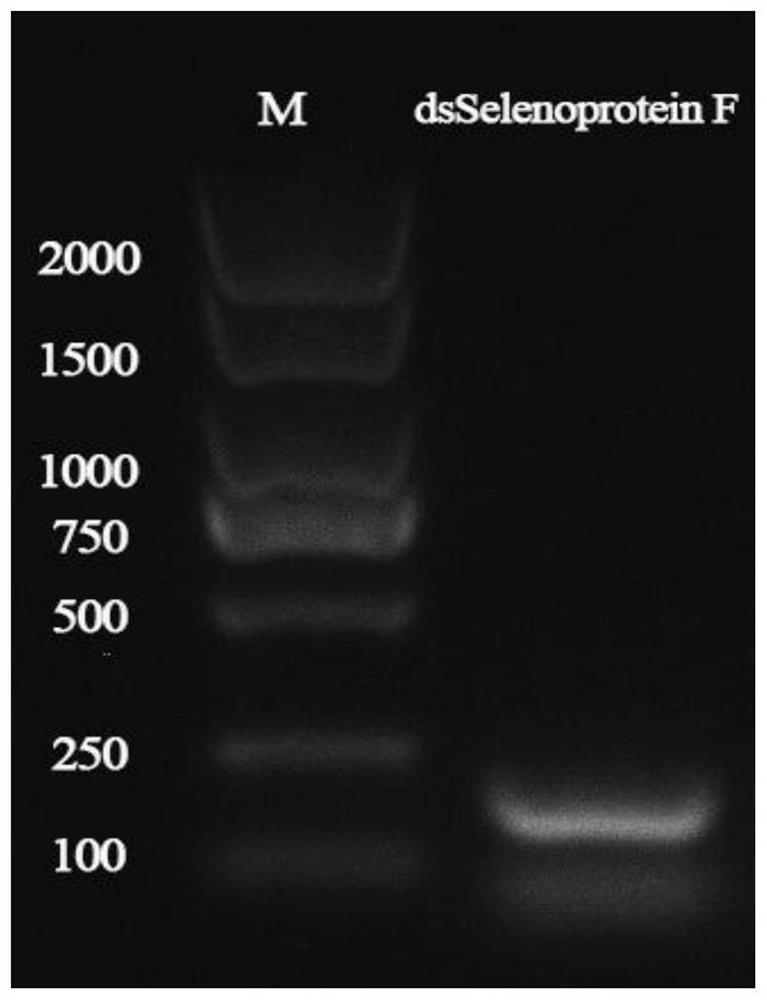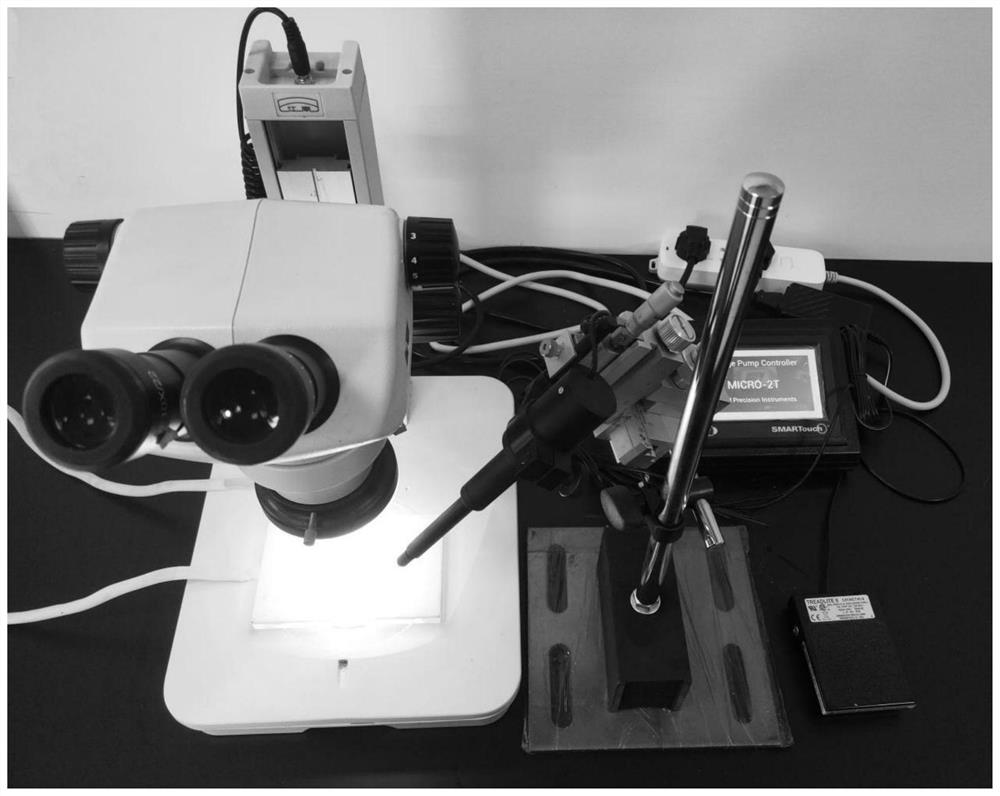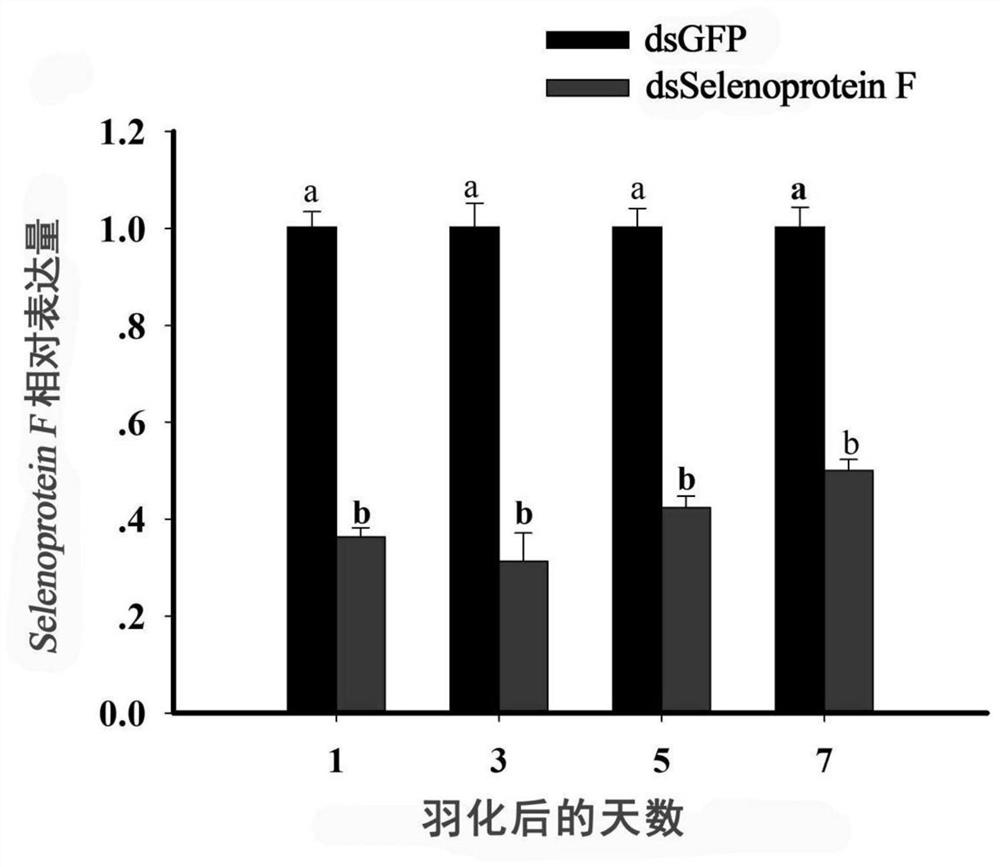DsRNA sequence for regulating and controlling male nilaparvata lugens seminal fluid Selenoprotein F and application of dsRNA sequence
A brown planthopper and sequence technology, applied in the field of molecular biology, can solve the problems of shortening sperm lifespan and sperm motility, and achieve the effects of reducing egg production and egg hatching rate, controlling the number of populations, and reducing the number of offspring populations.
- Summary
- Abstract
- Description
- Claims
- Application Information
AI Technical Summary
Problems solved by technology
Method used
Image
Examples
Embodiment 1
[0021]Example 1 Synthesis of dsRNA
[0022](1) Select the adult male brown planthopper in the insect breeding room, and extract the total RNA of the male brown planthopper using SV total isolation system Kit (Promega, Corporation, Madison, WI, USA);
[0023](2) Use Takara's PrimeScriptTM RT reagent Kit with gDNA Eraser kit to remove genomic DNA, and perform reverse transcription to synthesize cDNA template;
[0024](3) Download the full-length sequence of Selenoprotein F from NCBI (gene accession number: XM022339255), and use the software Primer Premier 5.0 to design dsRNA primers that interfere with Selenoprotein F. The dsRNA template sequence length is 226bp, and the primer sequence is shown in Table 1 (underlined T7 promoter), the designed primers were synthesized by the Shanghai Biotechnology Co., Ltd., and PCR amplified by Takara's Premix TaqTM (94℃, pre-denaturation 5min; 94℃, denaturation 40s; 55℃, annealing 40s; 72℃ Extend for 1 min, a total of 30 cycles of reactions; at 72°C and fin...
Embodiment 2
[0030]Example 2 Microinjection of dsRNA
[0031]Pass the newly emerging male brown planthopper to CO2After anesthesia, the synthetic dsRNA of the present invention is injected from the back of the male brown planthopper chest using a microinjector (100ng / head), and the needle stays for 25-30 seconds to pull out; after injection, it will be collected for 1, 3, 5, and 7 days after emergence Nilaparvata lugens samples were tested for changes in the expression level of the Selenoprotein F gene. The control group was injected with dsRNA synthesized with the green fluorescent protein GFP gene as a template.
Embodiment 3
[0032]Example 3 The effect of silencing Selenoprotein F gene on male brown planthopper on sperm transmission
[0033]Take a few males 2 days after emergence from each treatment, and dissect their internal reproductive system in pre-cooled PBS (pH 7.0). Tear open the abdomen with medical dissecting forceps under a stereo microscope (OLYMPUS CX23, Japan), remove the internal genitalia, remove the fat body and microtrachea attached to the internal genitalia, and pass the complete internal genitalia of the male through the stereo microscope (OLYMPUS CX23, Japan) Observe and take pictures with DS-Fi2 digital camera (Nikon, Tokyo, Japan).
[0034]Take the female adults of the brown planthopper 2 days after mating, dissect out the complete sperm vesicles and take the complete internal genitalia of the males 2 days after the emergence of various treatments, remove the fat body and microtrachea attached to the internal genitalia, and wash them with PBS 3 times, 10 min each time, add 4% paraformald...
PUM
 Login to View More
Login to View More Abstract
Description
Claims
Application Information
 Login to View More
Login to View More - R&D
- Intellectual Property
- Life Sciences
- Materials
- Tech Scout
- Unparalleled Data Quality
- Higher Quality Content
- 60% Fewer Hallucinations
Browse by: Latest US Patents, China's latest patents, Technical Efficacy Thesaurus, Application Domain, Technology Topic, Popular Technical Reports.
© 2025 PatSnap. All rights reserved.Legal|Privacy policy|Modern Slavery Act Transparency Statement|Sitemap|About US| Contact US: help@patsnap.com



